
Recent events in my life have led me to trim some fat off my firearms collection. When I did that, I thought hard about what I actually needed to support my shooting habits and needs. While I can afford my wants, I wanted to identify what I truly needed. To do that, I used a thought exercise where I set a limit of five handguns for myself. Fortunately, I do not actually have to impose that limit. However, the internet loves lists and I am a hack and a fraud. Furthermore, somebody just starting out would be well-served by a battery of handguns that roughly follows the choices I made. So, here we go: a five-gun battery of handguns for the serious handgun shooter.
The Five
I eventually settled on five handguns: a Glock 17, a Glock 26, a Colt 1911, and two Smith and Wesson revolvers — a K22 and a 442. Each is discussed in turn.
Glock 17
The list begins with a service-sized 9mm for good reason: they’re incredibly versatile. With one gun, a shooter can defend their home, shoot a match, attend a training class, and – with a bit of effort – carry in public. If I could own only one pistol, a service-size 9mm would be it. Full-size pistols like this Glock 17 support full-power weapon lights, which are considered to be best practice on a weapon kept for home defense. They carry enough ammunition that a reload is unlikely to be necessary. More modern options also support red dot optics if you, like most of our staff do, prefer them.
I chose Glock because it’s a Glock world. Parts, mags, and holsters are pretty much everywhere – and usually they’re cheap too. Though it’s hard to find a mainstream polymer pistol nowadays that is unreliable, Glocks have a well-earned reputation for dependability. If something goes wrong, they’re easy guns to repair. Furthermore, I have found 9mm Glocks are very easy to maintain proficiency with – even with a minimum of live fire.
This particular Glock 17 started in my collection as an inexpensive police trade-in. I’ve modified it somewhat to better fit my wants and needs. The KKM barrel is match-accurate and supports a compensator when I want to be stupid. The pistol is milled for one of my favorite optics, the Leupold Deltapoint Pro in 6MOA flavor. A Glock Performance Trigger, a magwell, and some extended controls enhance the hand-to-gun interface.
S&W 442
The next keeper is a Smith and Wesson 442 for all the reasons we use J Frames. In my opinion the 5-shot .38 snub is the smallest credible defensive pistol available, and one I have circled back to several times in my life. Small guns like these ensure you can be armed virtually all of the time if you so choose. Snub revolvers work well in the pocket. They work well as a “floating gun,” easily transferred from a holster to a jacket pocket while you’re pumping gas. J-Frames work well under a tucked-in shirt. They work well when neglected and covered in lint. And so on and so forth…
My experience has been that semi-automatic pocket options are often lacking in some way: reliability, shape, size, and/or ammunition performance. In contrast, for revolvers, if it fits, it fires – which eliminates a lot of the ammunition vetting process. Despite being larger dimensionally than many semi-autos, I’ve found revolvers carry better in the pocket. These rounded guns are both easier to disguise and easier to grip in the pocket. Additionally, they are far less prone to snag on the draw. Perhaps most importantly, revolvers are much more tolerant of an imperfect grip – an often-overlooked consideration when dealing with tiny guns.
My 442 is an early 90s production gun with a fair amount of miles on it. The revolver is largely unmodified. The internals appear to be factory and I have no plans to change them. Thousands of dry presses made for a pretty good trigger job. I added some leather to the backstrap and wrapped the grips in hockey tape to help cushion the recoil. I may add a set of Crimson Trace grips in the future, but otherwise the gun will remain stock.
1911
Like many people who like America, my collection would simply feel incomplete without some example of a 1911. Well-built examples represent a level of craftsmanship and personalization that is lacking in today’s modern daily drivers. For a very long time in this country, any self-proclaimed serious shooter sought out a 1911. Just as a sports car required an experienced and capable driver, so too did a 1911 require a trained and competent shooter to maximize its potential. The perception that serious shooters shot 1911s helped drive its adoption by special organizations both military and law enforcement, as well as its proliferation amongst the firearms trainers until fairly recently. And, when appropriately set up, they remain viable choices for defense if need be – obsolescent does not mean obsolete.
This pistol is a “ColtHawk” – a base-model Colt worked over with some retro-custom touches by Nighthawk Custom. As Nighthawk is very proud to state in their advertising materials, this pistol was worked over by a single gunsmith – much as one would have done during the heyday of the Modern Technique. The modifications mostly follow Jeff Cooper’s idea of “everything you need” – reliability work, high-visibility sights, a trigger job, and dehorning. The pistol also has frontstrap checkering and a nitride finish.
To me, this pistol represents a nod back to where defensive shooting came from. It also shows how far we’ve progressed: today, reliable pistols with good sights and decent triggers abound. Modern guns come that way out of the box – no gunsmithing required. For me, it’s a cool time capsule and one that brings a lot of enjoyment – and it also pokes big holes in stuff.
Glock 26
A compact belt gun that can be carried almost all of the time is essential in my opinion. While I can pull off a Glock 17 concealed in some clothing, “concealed” very quickly turns into “covered” as the temperatures rise. My logic in choosing the Glock 26 is that practice with my G17 is very transferrable to this pistol. The grip angle and index are the same and the recoil impulse is pretty close between the two sizes. The gun supports a full-size optic like the Holosun EPS, which is quite nice from a shootability standpoint.
Unlike the Glock 17, I have not modified this gun beyond the milled optic and the Tangodown mag release. While I am not necessarily in the “modifying your carry gun will get you convicted of murder” camp, I do believe that aftermarket triggers flirt with danger. Unscrupulous attorneys will say whatever they think they need to say to win, but it’s pretty hard to convincingly argue that better sights make a gun more dangerous or likely to be used irresponsibly. It’s not very hard to do that with a competition-oriented trigger or one that deactivates internal safeties.
This is probably one of the more controversial choices on the list. Many would argue this pistol was made obsolete by choices like the SIG P365 and S&W Shield Plus. It is absolutely true that those micro compact options are smaller for the same ammunition capacity. However, it has been my experience that those options give up a lot of shootability in exchange for their diminutive size, which is why I went with the more traditional subcompact for this role.
S&W K22
I enjoy building skill with handguns and I mostly use polymer 9mm guns to do that. That said, they just don’t excite me. Ken Hackathorn has been quoted as describing Glocks as “com[ing] out of the box with no pride of ownership.” There’s some truth there: a Honda Civic will reliably do just about everything a commuter will need, but there won’t be much fun in the process. Over time, I’ve found a lot of enjoyment in discovering the guns of yesterday. I’m at a point where any collection would not feel complete without at least one full-size revolver.
Like the 442, this K22 has some mileage on it. The serial number dates to 1947 and it has plainly seen a lifetime of use. It is easy to imagine it as a hunter’s field pistol or a revolver shooter’s sub-caliber understudy in a past life. This example will chew up the 10-ring at 25 yards with inexpensive Winchester Super-X if I do my part. The target sights are crisp and clear and the double-action trigger is phenomenal – both of which help tremendously in building marksmanship skill. The gun is downright enjoyable to shoot and unlike many of today’s rimfire pistols it doesn’t feel like a cheap toy.
I struggled pretty hard with this slot. I firmly believe every serious handgunner should have a quality rimfire option. However, this revolver’s inclusion meant the exclusion of some of my favorite handguns – a 2.5″ Model 19-3 or a 5″ Model 27-2. To compound the issue, a shooter’s rimfire needs can often be covered by a quality conversion kit, and were I to go that route I’d probably end up with a Marvel .22 conversion for my 1911. Ultimately, my desire to combine nostalgia with a quality rimfire training aid won the slot.
Conclusion on A Basic 5-Gun Battery of Handguns
I live a mostly urban lifestyle and exploring the great outdoors seems at times more of an aspiration than a true hobby. Defense against dangerous animals is a low concern – and in my part of the world, it’s a job easily handled by an appropriately-loaded .45ACP. Nevertheless, other differs a shooter in the Mountain West or a handgun hunter would probably include a big-bore revolver in their five. Such a person may also spend much less time “in town” — or around people who would balk at the sight of a handgun. A person living in a ban state may choose to use the 1911 for the roles performed by the Glock 17, as doing so frees up a slot for something more useful or enjoyable to that individual.
For the handgun enthusiast, limiting oneself to “only” five handguns is a lot harder than it first seems. Where I live and what I actually do with my handguns ultimately dictated what made the list. If you had to choose, what would you choose?

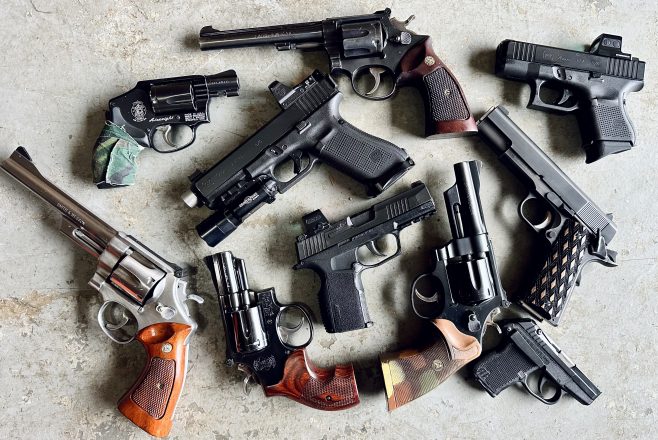
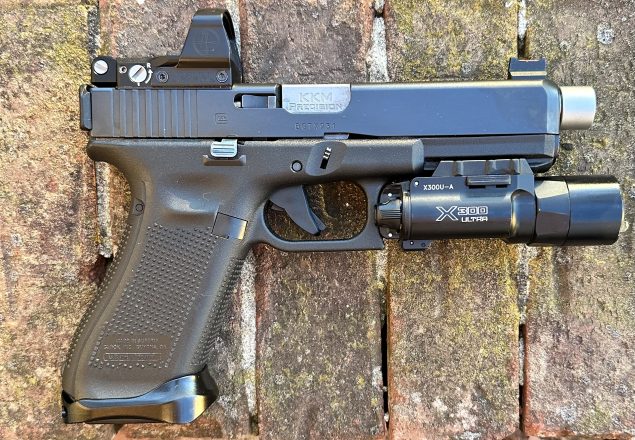
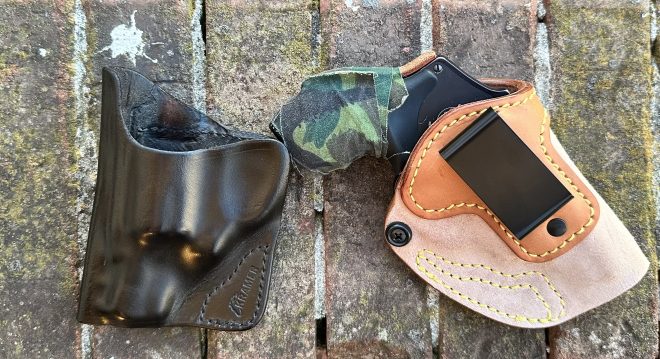
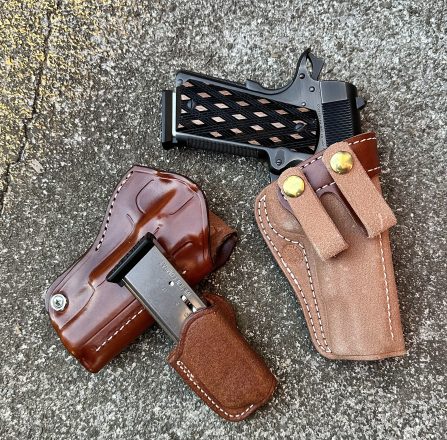
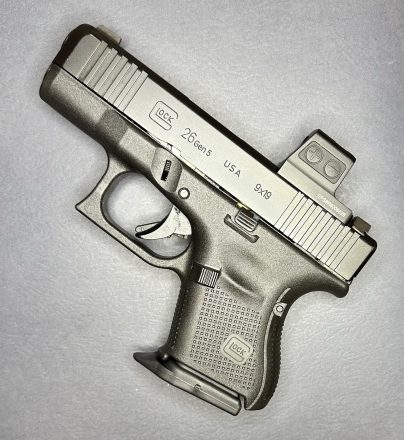

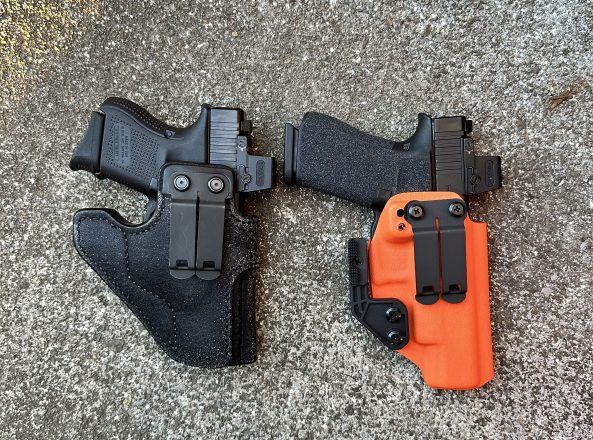
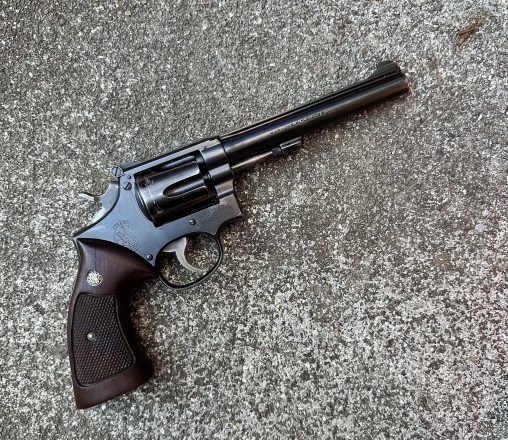

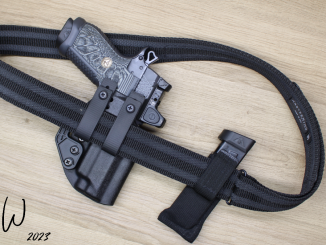

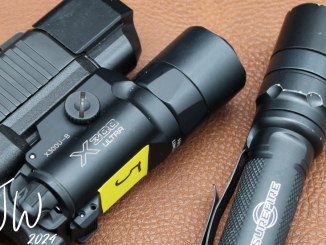
based article my mans